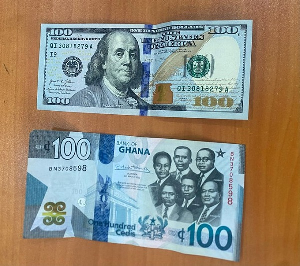In contemporary media, the performing and creative arts are often pigeonholed under the broad and sometimes diminishing label of "entertainment."
This classification, prevalent across both print and social media, overlooks the multifaceted roles these arts play in society. While entertainment is undoubtedly a significant aspect, reducing the arts to mere amusement undermines their cultural, educational and socio-economic contributions.
It's time to demystify and expand this narrative to reflect the true essence and impact of the performing and creative arts.
Educational value
The performing and creative arts are potent educational tools that foster critical thinking, empathy and cultural awareness. Theatre, for instance, provides a narrative medium through which complex social issues can be explored and understood.
Programmes integrating drama into education have shown significant improvements in student engagement and learning outcomes. Similarly, visual arts encourage creative problem-solving and innovation, skills highly valued in today's rapidly changing world.
By pigeonholing these fields as mere entertainment, we diminish their vital educational contributions.
Cultural preservation, promotion
Arts and culture are inextricably linked. The performing and creative arts serve as custodians of cultural heritage, preserving traditions, languages and histories.
Dance, music and visual arts are not only expressions of individual creativity but also reflections of collective identity. They promote intercultural dialogue and understanding, bridging gaps between diverse communities.
Labelling these practices as mere entertainment fails to recognise their role in fostering a cohesive and inclusive society.
Economic impact, job creation
The arts are significant economic drivers. They create jobs, attract tourism and stimulate local economies. According to the United Nations Educational, Scientific and Cultural Organisation (UNESCO), cultural and creative industries account for over 30 million jobs worldwide and contribute significant percentages to national GDPs.
When the arts are dismissed as just entertainment, their economic value and potential for job creation are grossly underestimated.
Social commentary, change
Throughout history, the performing and creative arts have been powerful vehicles for social commentary and change.
From the politically charged plays of Ancient Greece to the protest songs of the Civil Rights Movement, the arts have consistently provided a platform for voices that challenge the status quo.
By viewing the arts merely as entertainment, we overlook their capacity to inspire and drive societal transformation.
Call to media
It is incumbent upon the media to broaden their perspectives and reframe how the arts are portrayed. This means dedicating sections specifically to the educational, cultural, and economic dimensions of the arts rather than relegating them to the entertainment pages.
It involves critical engagement with the content, exploring the deeper narratives and implications of artistic works. By doing so, the media can foster a more nuanced appreciation of the arts among the public.
Conclusion
The performing and creative arts are far more than mere entertainment. They are educational tools, cultural preservers, economic drivers and catalysts for social change. It is high time the media, both print and social, recognised and reflected this multifaceted nature.
By moving beyond the narrow confines of "entertainment," we can begin to appreciate and support the arts in a way that truly acknowledges their value and impact on society. Let us demystify this narrative and celebrate the arts for all they contribute to our world.
Opinions of Tuesday, 2 July 2024
Columnist: Oduah Kwesi Sampson















